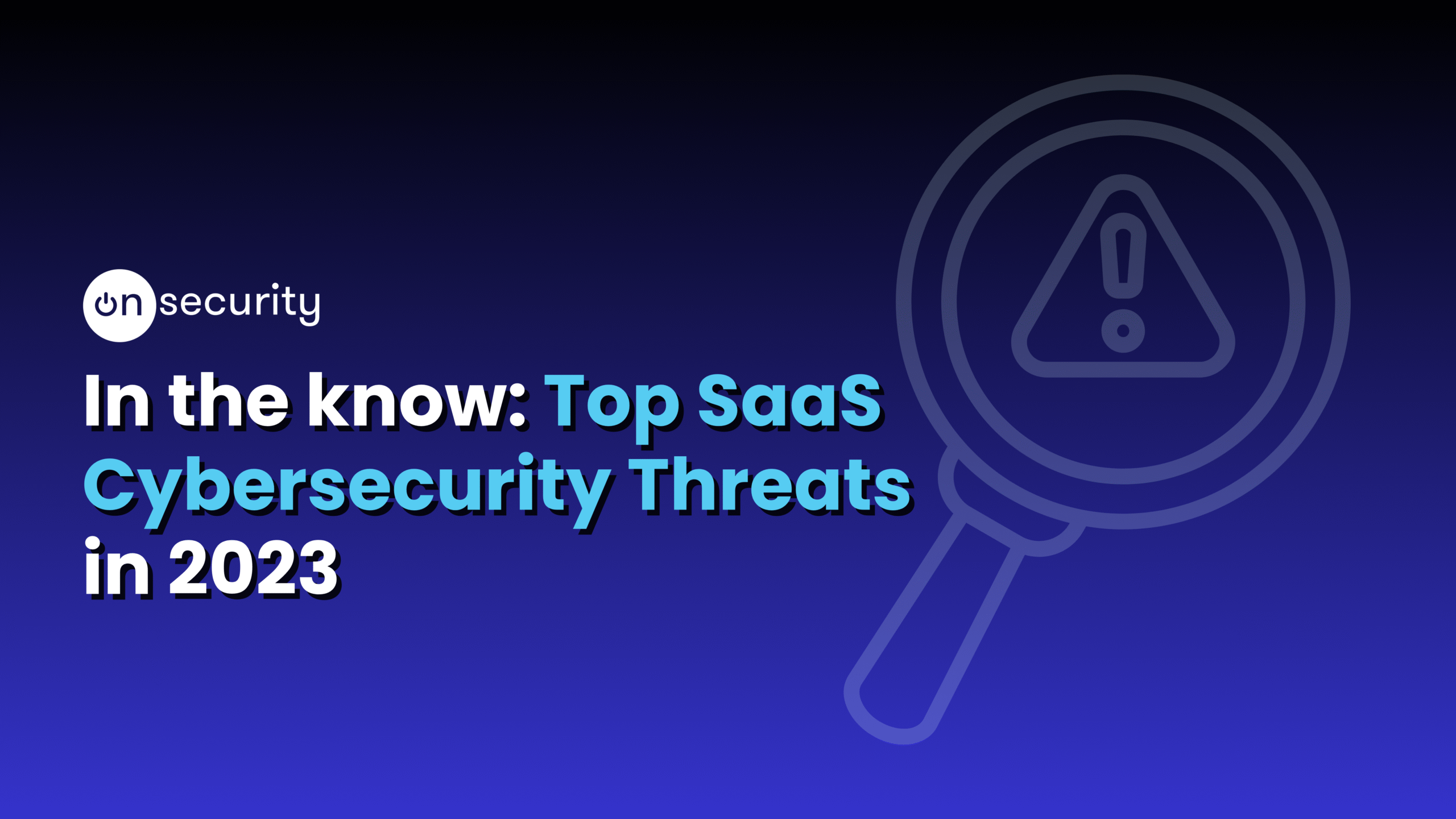As the world shifts towards a digital-first approach, Software-as-a-Service (SaaS) has become increasingly important in the realm of emerging technology.
Modern enterprises are turning to trusted SaaS providers for mission-critical workflows, with predictions that by 2025, 30% of organisations will rely solely on SaaS applications.
As the reliance on SaaS increases, so does the potential for cyber threats. In recent times, there has been a sharp uptick in the number of successful attacks against software companies.
The efficiency and flexibility of SaaS solutions, both technologically and financially, has led to increasing adoption of cloud-based technology. While this has many benefits, it can also present challenges for IT teams trying to keep up with the rapid pace of change.
It is crucial for software companies to be aware of potential cyber threats and take the necessary steps to protect their data and systems. With the right cyber security measures in place, SaaS providers can continue to help modern enterprises thrive in the digital age.
I. Threat #1: Phishing attacks
Phishing attacks are fraudulent attempts to acquire sensitive information such as credit card details, usernames and passwords.
These types of scams have been around for a long time, but have recently become an extremely popular attack vector for hackers. This is because It’s extremely cheap to run a campaign against a target organisation, and can often provide a good return on investment for attackers.
Phishing scams can be extremely damaging to both the individual and your business and are often used as a delivery method of more invasive and damaging malware or ransomware. As this is the case, it’s important you take extra precautions to ensure both your own safety and that of your organisation.
It’s vital that as an organisation, you are educating your staff and providing realistic training around phishing, social engineering, and general cyber security foundation topics.
We recommend that mitigations against phishing are planned under the assumption that phishing attacks will be successful against a member of staff so you can aim to minimise the impact of a successful phishing campaign.
OnSecurity can help you test your organisation’s susceptibility to phishing attacks and help improve your employee’s awareness of phishing scams.
Prevent phishing attacks with OnSecurity now with: Phish By OnSecurity.
II. Threat #2: Cloud Misconfigurations
As organisations increasingly adopt cloud technologies, it is important to be aware of the potential misconfigurations that can leave your infrastructure vulnerable to cyber attacks.
Common examples include unauthorised access, reduced visibility and control, insecure APIs and interfaces, and system vulnerabilities such as outdated or unsupported operating systems, shared memory, and resources.
Unfortunately, these misconfigurations can often be easily exploited by hackers using automated scans against public cloud infrastructure.
To mitigate these risks, it is crucial for organisations to proactively identify and address these vulnerabilities before they can be exploited.
III. Threat #3: Out Of Date Software
Patch Patch Patch!
Software has a life cycle, and when it’s out of date or end of its life, it’s no longer supported. As vulnerabilities and bugs are continuously discovered, an attacker might be able to critically exploit one of these vulnerabilities to gain unauthorised access to sensitive data and disrupt operations.
It is imperative that software is kept up to date to meet various industry compliance regulations. The last thing you need is your organisation racking up hefty fines for non-compliance.
IV. Threat #4: Insider Threats
It’s not just external threats that organisations should be considering in their planning. Often malicious users, disgruntled employees, and compromised users can become the source of a serious data leak or systems breach.
The Ponemon Institute provided an independent report that documents a 44% rise in insider threat incidents over the last two years. It also highlights the eye-watering cost of credential theft to organisations has risen sharply by 68% since 2022, costing a staggering total of $4.6 million in 2022.
Here are some ways we can reduce the potential disruption of insider threats:
- Assess the risk – A thorough risk assessment provides insight into the potential and realistic key assets and data face.
- Enforce strict access and password policies.
- Ensure strong entitlement management controls – such as identity and access management (IAM) are in place.
V. Threat #5: Supply Chain Attacks
Cyber attackers target vulnerable network protocols, unsecured server infrastructure, and unsafe coding practices to gain unauthorised access and install malware through build and update processes. These attacks, known as software supply chain attacks, can often go unnoticed by trusted vendors and potentially affect a large number of users.
The 2021 State of the Software Supply Chain report by Sonatype revealed a staggering 650% surge in software supply chain attacks from the previous year, indicating a dire and rapidly escalating threat to organisations worldwide.
To prevent these kind of attacks, organisations should implement secure coding practices and update their software as soon as an update becomes available.
It’s vitally important to thoroughly evaluate and scrutinise vendors before utilising any of their products in your deployment. Migrating to a zero trust model can prove to be rather effective in this scenario, as by assuming that no user or application is trusted by default, we can minimise the amount of potential damage that could be caused by a breach.
Conclusion
As the reliance on SaaS solutions continues to grow, so does the potential for cyber threats. Software companies must be aware of the potential risks and take the necessary steps to protect their data and systems.
Threats such as phishing attacks, cloud misconfigurations, out-of-date software, and insider threats can all have devastating consequences for an organisation.
By being aware of the threats and implementing the right cyber security measures and educating employees, SaaS providers can continue to help modern enterprises thrive in the digital age while keeping them safe from cyber threats.
OnSecurity understands the importance of safeguarding your online presence and that’s why we offer a range of comprehensive cybersecurity solutions that will help your organisation stay safe.
Scan by OnSecurity offers continuous external vulnerability scanning and management of your Internet-facing assets. Stay ahead of the hackers and start scanning your vulnerabilities today, follow the link here: Scan By OnSecurity.


